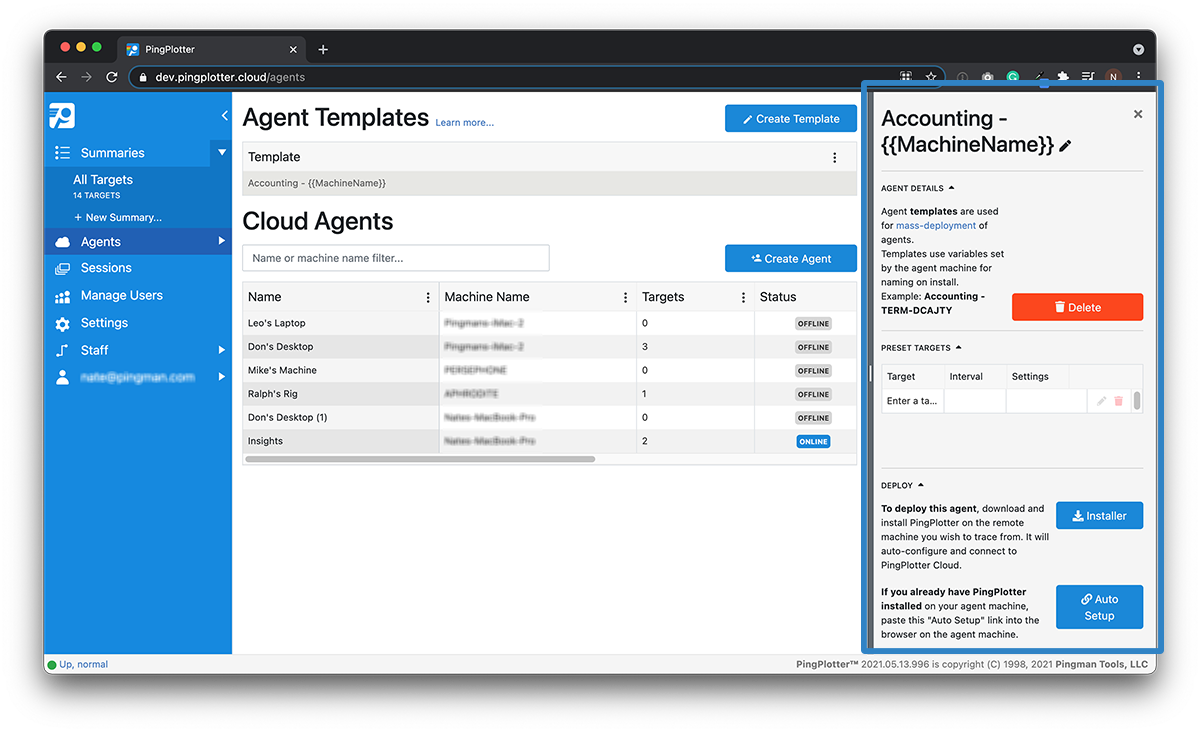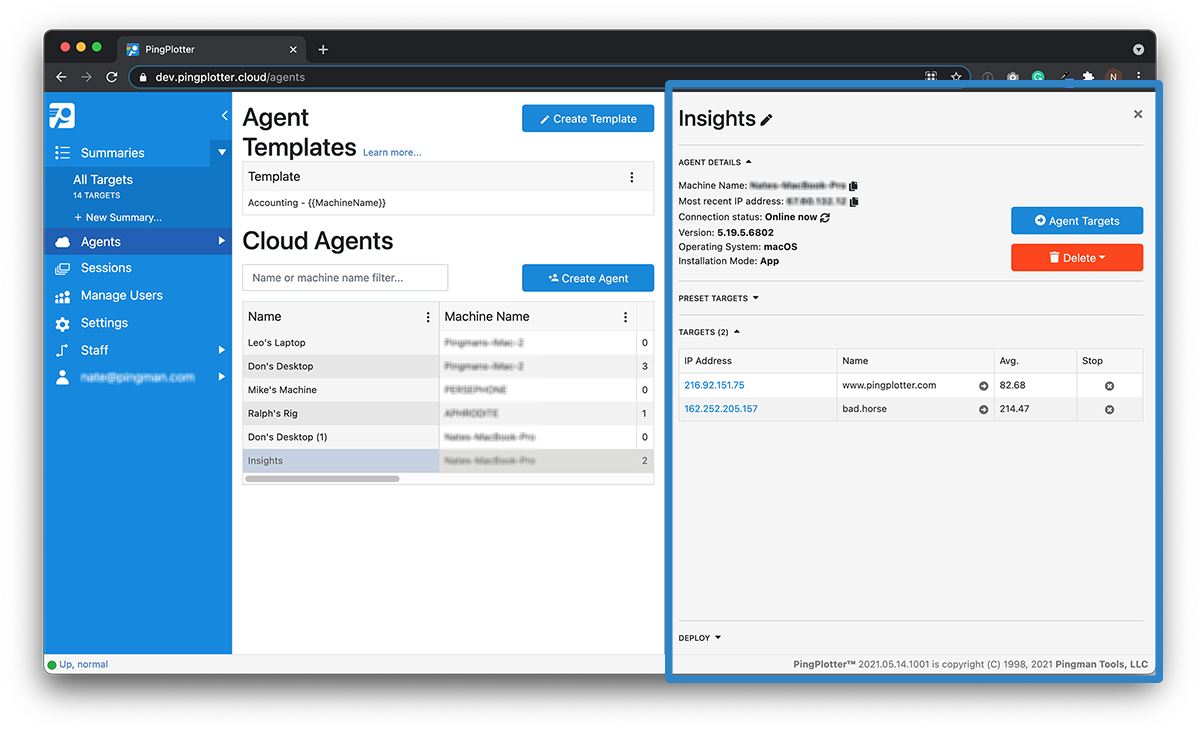
Using PingPlotter
Get a head start with PingPlotter Cloud’s Agent presets
PingPlotter Cloud’s latest update speeds up remote deployment, getting you network diagnostic data in an instant.
There’s an understood truth when it comes to using new technology:
You spend time on the front end to save time on the back end.
In the PingPlotter labs, we often discuss how we can make both sides faster. And while we’ve done a lot to speed things up for day-to-day use — from souping up our packet engine to creating better ways to share data — reducing the time it takes to get up and running is always on our mind.
In that spirit, we’ve added a major time-saver to PingPlotter Cloud: Agent presets.
Agent presets take templates to a whole new level. You can now set traces to begin once an Agent is deployed to a device. Have a connection you want to monitor for every work-from-home employee? Agent presets make it a breeze.
There’s no better time to start using Agent presets, so let’s get to it!
Skip the setup with Agent presets
Like we mentioned, getting a new tool deployed takes effort. While PingPlotter Cloud’s Agent deployment is already fast and easy, installing an Agent is only the first step in monitoring connections and solving problems.
Agent presets take care of the rest of getting started.
With presets, each Agent and Agent template can now be configured with a list of pre-defined trace targets that begin testing once the Agent is installed.

Neat! But what does that actually mean for you?
Let’s say you’re supporting a VFX studio with a significant number of remote artists. Each artist has two critical network connections: one to the cloud render farm they use for, you know, rendering, and one to an in-office server they use to share assets. Any issue with either connection is going to slow them down considerably.
Before, you would need to create an Agent template, deploy it to each employee workstation, wait for them to connect, then manually enter the target IP addresses for the render farm and the office server one by one.
Agent presets cut out all the tedium. You can now create an Agent template with a preset target list pointing to the farm and the server.

When you click on a template, you will now see a Preset Targets dropdown in the Agent summary panel. Inside the dropdown, you can create a new target preset, complete with all the settings you’d normally configure for any other PingPlotter trace.
Now, whenever you deploy a new Agent based on the template, it will start tracing to both targets the moment it’s installed.
As you can imagine, this is a massive time-saver for mass deployments. Once a Cloud Agent is installed on a device, it starts collecting data immediately with no additional setup. Compound that time saved across a dozen or even a hundred Agents, and what might have taken you an afternoon can be wrapped up in minutes.
See more of your Agents
The eagle-eyed Cloud user may have noticed a subtle change to the Agents screenshots above. That’s because Agent presets are just one part of Cloud’s updated Agent summary panel.
PingPlotter Cloud’s new Agent summary panel is home to a ton of useful information and management utilities. To open an Agent summary, navigate to the Agents screen and select any of your deployed Agents.

This summary contains a ton of useful information, from device details to active traces. You can quickly start or stop testing, change targets, or navigate to any running trace to view results.
The new summary panel simplifies both Agent management and day-to-day usage. Instead of jumping from page to page to view different details, you have one stop for all your Agent needs.
Getting up to speed on what comes next
For everyone on the PingPlotter team, our mission has always been to develop better, faster ways of helping everyone see and solve their network problems.
For Cloud, some of our attention has been focused on bringing the ease and flexibility of Agent template variables to preset targets themselves, making mass deployment of Cloud even more streamlined. Imagine an Agent that automatically traces to a WFH employee’s WiFi router out of the gate or tests device NICs instantly without you knowing a single detail about the machine or other network-connected devices you’re monitoring.
We’ve also turned our eye toward the Cloud home screen. Or rather, what could be the Cloud home screen. Our ambitions for PingPlotter Cloud extend far beyond the current UX, which means it’s time for an update.
This is all in addition to creating better stability, better security, and better user experiences across every PingPlotter product.
As always, the best way to experience everything new with PingPlotter is to see it in action. If you’re a current Cloud user, Agent presets and the new Agent summary panel are live. Simply log into Cloud — it will all be ready and waiting.
If you’re curious to see how Cloud can make a difference for you and your team, request a free trial! We’re all ears when it comes to understanding your network-related frustrations and helping you find a solution that works.
There’s one more thing…
Agent presets aren’t the only new thing. This latest update introduces a new feature that we have been dreaming of for years: automated network analysis.
Yep! You read it right. PingPlotter Cloud can now analyze your trace data and point out potential issues.
We call it PingPlotter Insights, and you can learn more about it here.
Do you support other people?When remote workers have connection trouble PingPlotter Cloud helps you help them.
